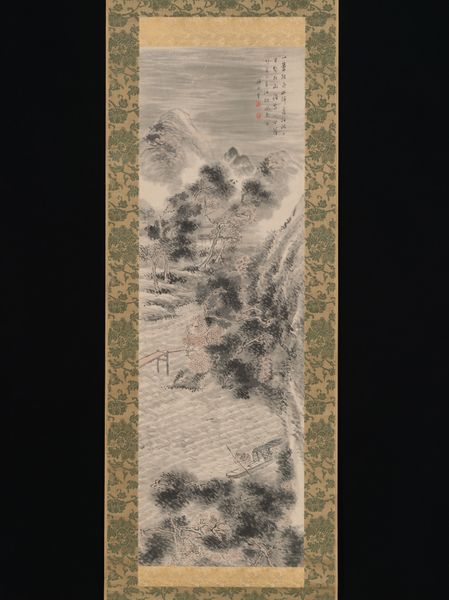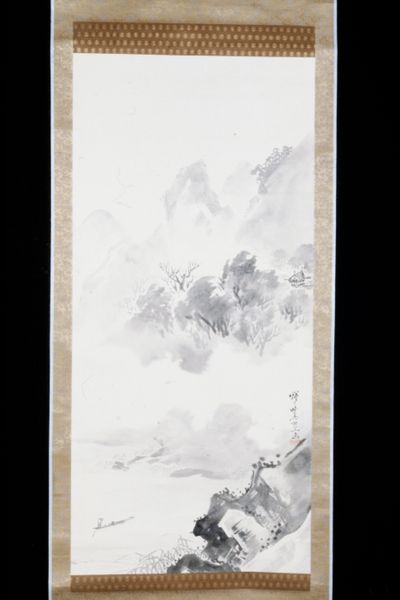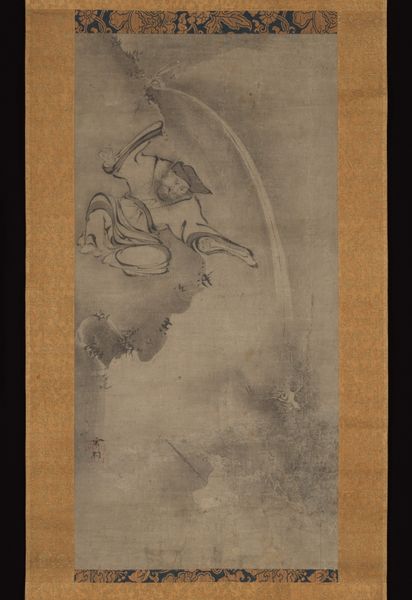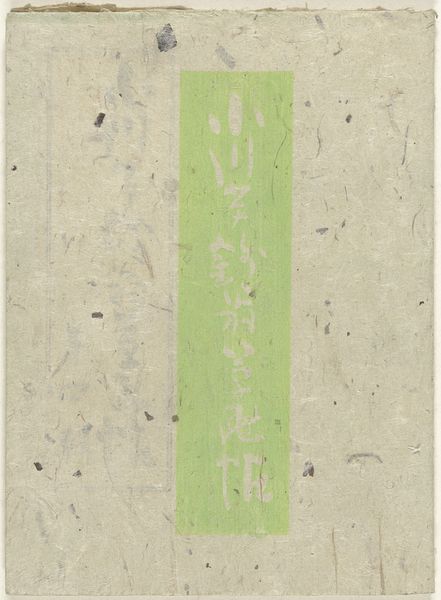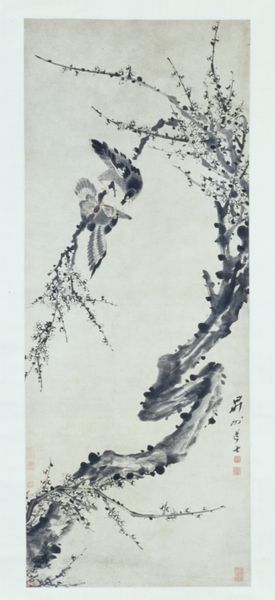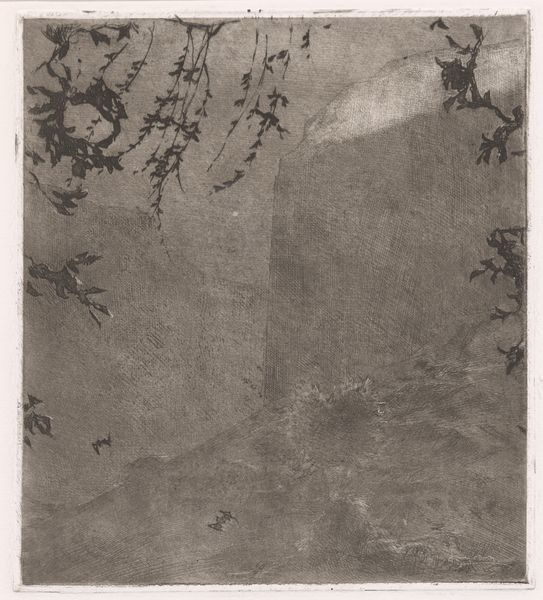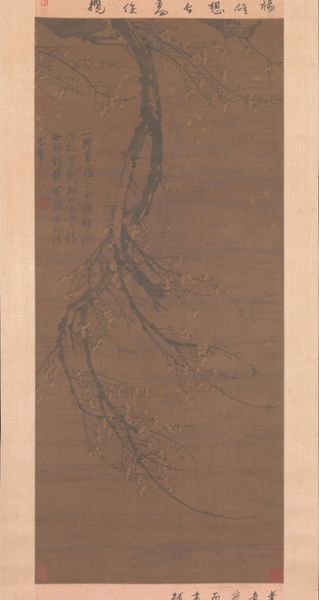
drawing, ink
#
drawing
#
asian-art
#
ink
#
calligraphy
Dimensions: height 101.8 cm, width 29.7 cm
Copyright: Rijks Museum: Open Domain
Curator: What a fascinating piece! This scroll, "Zen Painting and Calligraphy" by Nyōren Daien, created between 1785 and 1858, features dynamic ink drawings. Editor: My first thought is: controlled chaos! It’s so striking with the stark black ink against the pale paper. The strokes look both deliberate and spontaneous, very gestural. What was Daien working with here? Curator: The material impact is undeniable. These scrolls demanded immense skill. High-quality paper was essential, made painstakingly by hand. Then the artist would have ground the inkstick to just the right consistency with water on a stone, then applying the mixture with brushes that needed perfect responsiveness. All that labor before even beginning the painting! It is very immediate in the making but clearly rooted in much preparation and knowledge of material handling. Editor: Precisely! Considering the historical context, Zen art served an important purpose beyond mere aesthetics. It was integrated into monastic practice and made for a wide lay audience as well. It was a communication tool, really, attempting to make the viewer access Zen states. Did they really value the role that scrolls, brushes and labor played to spread this philosophy? Curator: Undoubtedly. The quality of the materials directly reflected on the value placed on the work, influencing its reception in temple circles and among collectors. It also reveals a blurring of high art and skilled craft. Editor: It seems that a key feature of ink calligraphy and painting traditions involved the artist acting as medium by externalizing the philosophy onto the canvas! You also sense the artist wrestling to visually convey core Zen concepts, like emptiness and spontaneity. How interesting to realize it was achieved via slow labor that then resulted in quick painting strokes! Curator: Exactly. To delve a little deeper, it exemplifies that dialectic approach toward painting: It all becomes clear through those material considerations. Editor: It’s such a privilege to witness, even centuries later, the continued public engagement this medium facilitates across all societies. Curator: Indeed. Focusing on materiality helps us grasp that its impact isn't just visual or conceptual, but tied to labor and economy as well, a reminder that Zen paintings were part of larger social and economic networks. Editor: And the way art, history, philosophy, and even commerce all come together, right here in front of us! A potent example indeed!
Comments
No comments
Be the first to comment and join the conversation on the ultimate creative platform.
